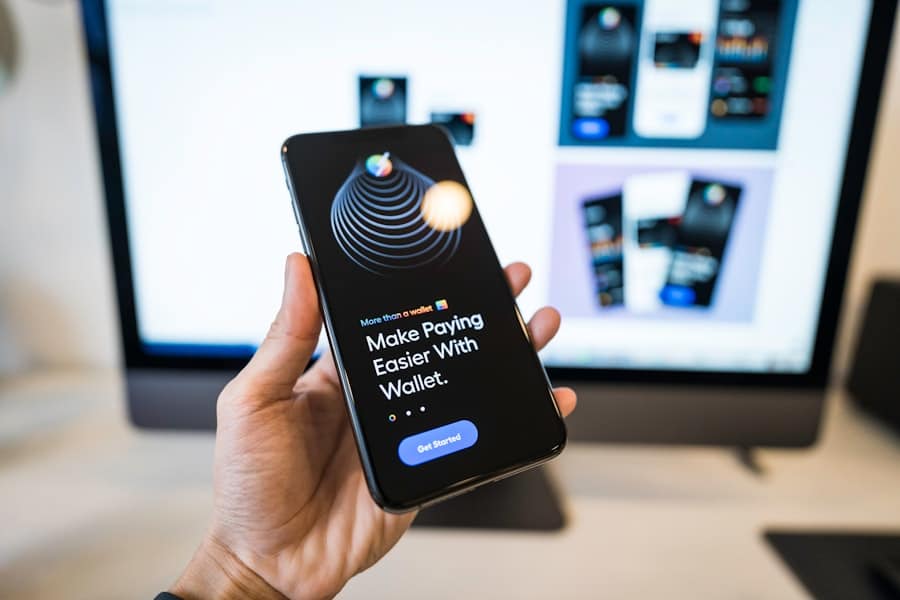Micro-insurance represents a transformative approach to risk management, specifically designed to cater to low-income individuals and communities who are often excluded from traditional insurance markets. This innovative financial product provides coverage for specific risks at affordable premiums, making it accessible to those who typically lack the financial means to purchase conventional insurance. The concept of micro-insurance emerged in the late 1990s, primarily as a response to the growing need for financial protection among the world’s poorest populations.
It aims to mitigate the financial impact of unforeseen events such as illness, natural disasters, or accidents, thereby enhancing the resilience of vulnerable communities. The micro-insurance market has gained traction in various regions, particularly in developing countries where a significant portion of the population remains unbanked or underinsured. According to the International Labour Organization (ILO), approximately 2.7 billion people worldwide lack access to any form of social protection, underscoring the urgent need for affordable insurance solutions.
Micro-insurance products can range from health and life insurance to crop and property coverage, tailored to meet the specific needs of low-income households. By providing a safety net, micro-insurance not only protects individuals but also fosters economic stability and growth within communities.
Key Takeaways
- Micro-insurance markets provide low-income individuals with access to affordable insurance products, helping them manage financial risks and improve their resilience.
- FinTech has significantly impacted micro-insurance by enabling the development of innovative and accessible insurance products, as well as streamlining the distribution and claims processes.
- Technology plays a crucial role in reaching the unbanked population by providing them with convenient and cost-effective access to micro-insurance products and services.
- Data analytics is essential in micro-insurance to assess risk, personalize products, and improve underwriting processes, ultimately leading to better outcomes for both insurers and policyholders.
- While FinTech offers numerous advantages in micro-insurance, it also presents challenges such as data privacy concerns, regulatory compliance, and the digital divide.
The Impact of FinTech on Micro-Insurance
The advent of financial technology (FinTech) has revolutionized the micro-insurance landscape, enabling providers to reach underserved populations more effectively than ever before. FinTech innovations have streamlined processes, reduced operational costs, and enhanced customer engagement, making it easier for micro-insurance companies to offer their products. For instance, mobile technology has become a cornerstone of micro-insurance distribution, allowing providers to deliver services directly to consumers’ smartphones.
This shift has not only improved accessibility but has also facilitated real-time communication between insurers and policyholders. Moreover, FinTech has introduced new business models that challenge traditional insurance paradigms. Peer-to-peer (P2P) insurance platforms, for example, leverage social networks to pool resources among individuals with similar risks.
This model not only reduces costs but also fosters a sense of community among policyholders.
As a result, FinTech is not merely an enabler but a catalyst for innovation within the micro-insurance sector.
Leveraging Technology to Reach the Unbanked Population

One of the most significant challenges in expanding micro-insurance is reaching the unbanked population, which often lacks access to traditional financial services. Technology plays a pivotal role in bridging this gap by providing alternative channels for delivering insurance products. Mobile money platforms, for instance, have gained immense popularity in regions like Sub-Saharan Africa, where banking infrastructure is limited.
These platforms allow users to conduct financial transactions via their mobile phones, making it easier for them to pay premiums and receive payouts. In addition to mobile money, digital platforms can facilitate education and awareness about micro-insurance products among unbanked populations. Many individuals may be unaware of the benefits of insurance or may harbor misconceptions about its affordability and accessibility.
Through targeted digital marketing campaigns and educational initiatives delivered via social media or SMS, insurers can demystify micro-insurance and encourage uptake among potential customers. Furthermore, partnerships with local organizations and community leaders can enhance trust and credibility, making it easier for insurers to penetrate these markets.
The Role of Data Analytics in Micro-Insurance
Data analytics is transforming the way micro-insurance providers assess risk and tailor their offerings. By leveraging big data, insurers can gain insights into customer behavior, preferences, and risk profiles, enabling them to design products that meet the specific needs of their target audience. For example, data collected from mobile devices can provide valuable information about an individual’s health status or lifestyle choices, allowing insurers to offer personalized coverage options.
Moreover, predictive analytics can enhance underwriting processes by identifying potential risks more accurately. This capability is particularly crucial in micro-insurance, where traditional risk assessment methods may not be applicable due to limited historical data. By analyzing patterns and trends from diverse data sources—such as social media activity or transaction history—insurers can make informed decisions about pricing and coverage limits.
This data-driven approach not only improves operational efficiency but also enhances customer satisfaction by ensuring that products are relevant and affordable.
Advantages and Challenges of FinTech in Micro-Insurance
The integration of FinTech into micro-insurance presents numerous advantages that can significantly enhance service delivery and customer experience. One of the primary benefits is cost reduction; by automating processes such as claims handling and customer onboarding, insurers can lower operational expenses and pass these savings on to consumers in the form of lower premiums. Additionally, FinTech solutions enable faster claim processing times, which is crucial for low-income individuals who may rely on timely payouts for their survival.
However, despite these advantages, several challenges persist in the intersection of FinTech and micro-insurance. One major concern is the digital divide; while technology has the potential to reach underserved populations, not everyone has equal access to digital tools or internet connectivity. This disparity can exacerbate existing inequalities and limit the effectiveness of FinTech solutions in certain regions.
Furthermore, regulatory hurdles can pose significant obstacles for FinTech companies seeking to enter the micro-insurance market. Navigating complex legal frameworks and compliance requirements can be daunting, particularly for startups with limited resources.
Innovations in Payment Systems for Micro-Insurance

Innovative payment systems are crucial for enhancing the accessibility and affordability of micro-insurance products. Traditional payment methods often pose barriers for low-income individuals who may lack bank accounts or credit cards. In response, many micro-insurance providers are adopting alternative payment solutions that cater specifically to their target audience.
Mobile wallets have emerged as a popular option, allowing users to make payments directly from their phones without needing a bank account. Additionally, some insurers are exploring pay-as-you-go models that enable customers to pay premiums based on their usage or income levels. This flexibility can significantly lower the financial burden on policyholders while ensuring that they remain covered during critical times.
For instance, agricultural micro-insurance products may allow farmers to pay premiums during harvest season when they have more cash flow available. Such innovations not only improve affordability but also encourage greater participation in micro-insurance programs.
Regulatory Considerations for FinTech in Micro-Insurance Markets
As FinTech continues to reshape the micro-insurance landscape, regulatory considerations become increasingly important. Policymakers must strike a balance between fostering innovation and ensuring consumer protection within this rapidly evolving sector. One key challenge is developing regulations that accommodate new business models without stifling creativity or limiting access to essential services.
Regulatory frameworks must also address issues related to data privacy and security, particularly given the sensitive nature of personal information collected by FinTech companies. Ensuring that consumer data is protected while still allowing insurers to leverage analytics for risk assessment is a delicate balancing act. Furthermore, regulators must consider how best to support collaboration between traditional insurers and FinTech startups, as partnerships can drive innovation while maintaining compliance with existing laws.
Future Trends and Opportunities in Expanding Micro-Insurance with FinTech
Looking ahead, several trends are poised to shape the future of micro-insurance as it intersects with FinTech. One notable trend is the increasing emphasis on sustainability and social impact within the insurance industry. As consumers become more socially conscious, there is a growing demand for products that not only provide financial protection but also contribute positively to society and the environment.
Insurers that align their offerings with these values may find new opportunities for growth in emerging markets. Additionally, advancements in artificial intelligence (AI) and machine learning are expected to further enhance risk assessment and customer engagement in micro-insurance. These technologies can enable insurers to analyze vast amounts of data more efficiently, leading to more accurate pricing models and personalized product offerings.
As AI continues to evolve, it may also facilitate automated claims processing, reducing turnaround times and improving customer satisfaction. In conclusion, the integration of FinTech into micro-insurance markets presents both challenges and opportunities that will shape the future landscape of this vital sector. By leveraging technology effectively while navigating regulatory complexities, stakeholders can work towards creating a more inclusive insurance ecosystem that empowers low-income individuals and communities worldwide.
If you are interested in exploring the latest technology trends, you may also want to check out this article on the features of the Samsung Notebook 9 Pro. This article delves into the specifications and capabilities of this cutting-edge laptop, providing valuable insights for tech enthusiasts.
FAQs
What is FinTech?
FinTech, short for financial technology, refers to the use of technology to provide financial services. This can include mobile banking, peer-to-peer lending, and digital payments.
What is micro-insurance?
Micro-insurance is a type of insurance specifically designed for low-income individuals or those with limited access to traditional insurance products. It provides coverage for risks such as illness, death, and natural disasters at an affordable cost.
How does FinTech expand micro-insurance markets?
FinTech expands micro-insurance markets by leveraging technology to reach underserved populations, streamline processes, and reduce costs. This allows for the creation of innovative insurance products tailored to the needs of low-income individuals.
What are the benefits of using FinTech in micro-insurance?
Using FinTech in micro-insurance can lead to increased financial inclusion, improved risk management for low-income individuals, and greater access to essential insurance products. It also allows for more efficient claims processing and customer service.
What are some examples of FinTech solutions in micro-insurance?
Examples of FinTech solutions in micro-insurance include mobile-based insurance platforms, digital payment systems for premium collection, and the use of data analytics to assess risk and customize insurance products for underserved populations.

